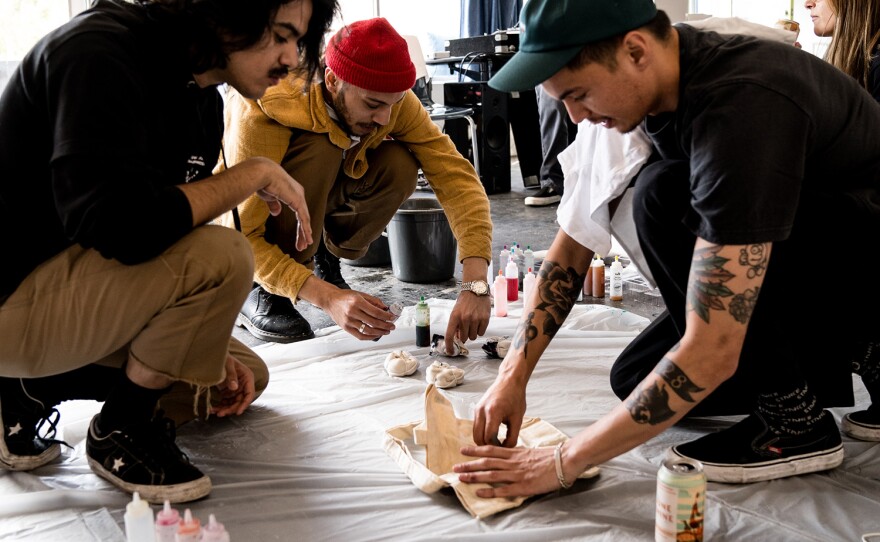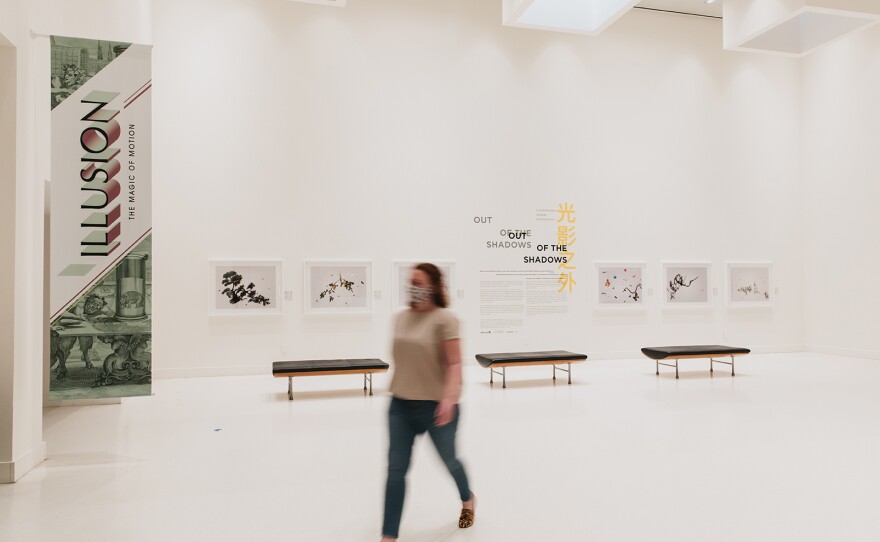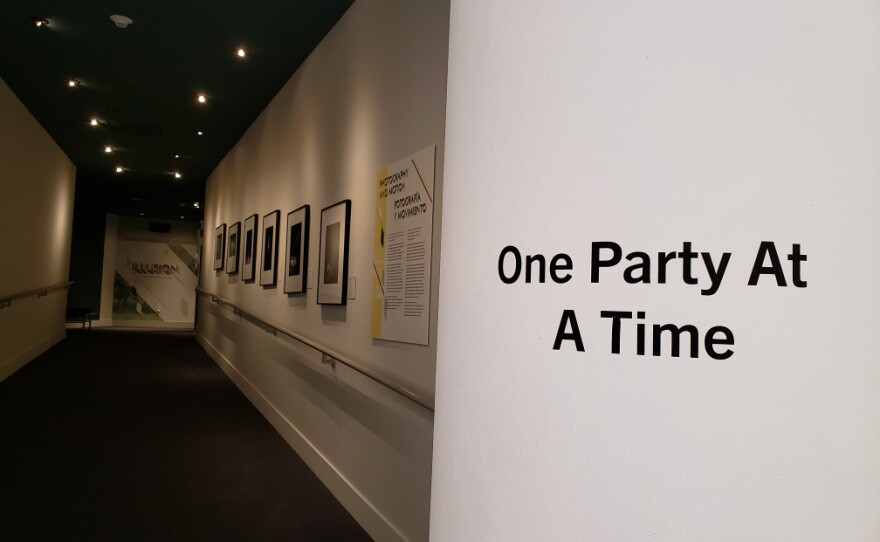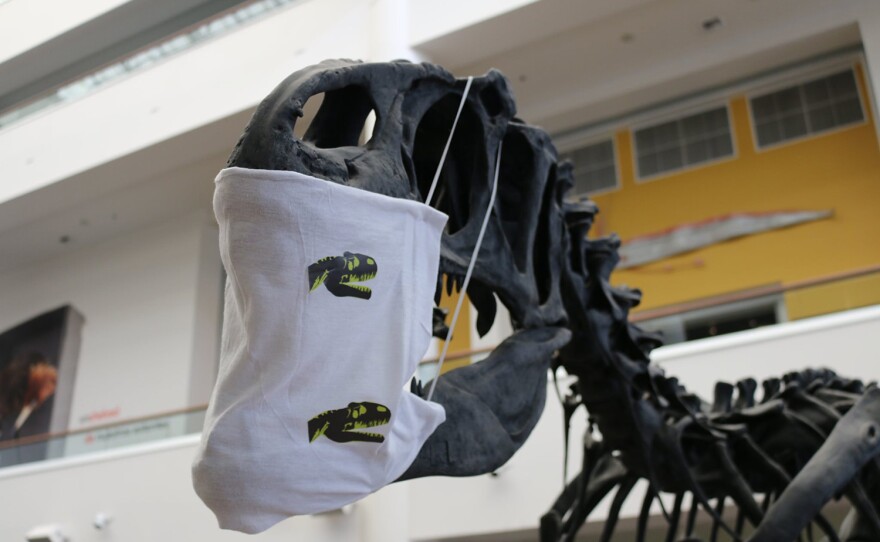Many San Diego museums and cultural institutions reopened their doors to the public only to quickly close again. Some, like the San Diego Museum of Art, never had a chance to welcome visitors again, while many others, including the small art space Good Faith Gallery have no plans to reopen just yet. Here's what the rollercoaster of the last week may predict about the future for museums.
San Diego Museum of Art
Administrators at the San Diego Museum of Art (SDMA) had been dreaming of this day since mid-March: their planned public reopening date of July 9. They scheduled two member preview days for earlier in the week, trained staff on new safety protocols, built plexiglass screens for their entry stations and initiated a ticketless payment system.
But amid an increase of COVID-19 cases, county officials warned late last week that indoor spaces might soon be added to the state's mandatory closures list. This sent SDMA into a last-minute reevaluation.
Canceling the member preview days, they spent much of the weekend waiting for word from regional health officials, and SDMA ultimately canceled their public opening too.
Roxana Velásquez, executive director at SDMA, is taking it all in stride. She said they're disappointed to not be welcoming visitors, but safety is important. And if this pandemic has taught local institutions anything, it's how to change plans.
Like many arts spaces, they had quickly adapted in the first place, fast-tracking conversations and plans already in the works about becoming a "digital-first" organization and meeting the audiences where they are.
"We were trying to never be out of the minds of everybody in the community," Velásquez said. "Because we know that art is absolutely fundamental. It’s critical. How could you survive the last three months without a book or a film?"
Good Faith Gallery In Sherman Heights
"We call ourselves a safe space, and I really had to think about what that meant," said Tony Becker, co-owner of Good Faith Gallery. Along with Lisa Kline Simon, Becker opened the art space in the Sherman Heights neighborhood in 2018. The chance that they would have to close again soon made the risk of reopening seem too much.
Good Faith is an event-focused art space, thriving in collaborative projects between visual and studio artists and musicians and performers. They're also currently without an exhibition on their walls. Before the pandemic took hold, Good Faith was planning to host Bay Area musician Salami Rose Joe Louis — known for her sci-fi tinged lounge music — in collaboration with local artist Jonny Alexander. The plan, postponed for now, would involve Alexander building an immersive art installation around the performance. "She kind of has this very spacy, jazzy, down-tempo feel to her music and he was building almost like a living room in space," said Becker. "It’ll happen someday. I trust down the road it’ll still make sense somehow."

Two artists-in-residence are currently at work at Good Faith, and they've focused their online presence toward activism. They designed a shirt that said "Black is Beautiful," with proceeds donated to a nonprofit, Color of Change. "In many ways Good Faith Gallery began as its own act of protest. A Black-owned art gallery with aspirations to do everything 'they' said we couldn’t, all without harboring ill will, an ideal that lately has not been easy to uphold," the gallery wrote on Instagram about the shirt design last month.
Becker looks forward to envisioning a reopening when safe, but they're in no rush.
"Honestly, I guess I sit my watch from the window and I don’t see things getting much better. It’s led me to thinking that maybe we really have to adapt to the way things are right now. And I think there are very inventive ways to still engage an audience, especially with all the tools we have now," Becker said. "We’ve started trying to think of working more in interactive digital artwork," he added, and said that they're exploring gaming-style models to recreate the connectivity of art shows.
Museum of Photographic Arts
At Balboa Park, the Museum of Photographic Arts (MOPA) had actually reopened to members on July 2 and to the public on July 4, but were closed again by July 7.

MOPA's executive director and chief curator Deborah Klochko said that even though the official guidance is three weeks for this current round of closures and restrictions, she doesn't foresee the museum reopening until after Labor Day, unless San Diego's COVID situation dramatically improves. "The excitement of reopening and then having to close again, it’s not only kind of a level of emotion, but it's also a lot of work," Klochko said.
"Museums, especially a museum like MOPA, serving our audience, serving our public is in our DNA," said Klochko. "To have to close is really difficult, but at the same time we’re living in a new reality right now."
Like Good Faith Gallery, Klochko also said that the museum is exploring gaming models and landscapes to try to meet audiences where they are in the digital landscape. As a "pay what you wish" institution for years, they have been working on ways to reduce their dependence on ticket income, but the interactive virtual future does hold potential for individual, smaller donations or income.
The pandemic has uprooted exhibition schedules, as Klochko noted that most museums typically plan approximately two years in advance. When they do reopen, they hope to let visitors spend more time with their "Out of the Shadows: Contemporary Chinese Photography" exhibition, which just opened days before their March closure, and future programming will be pushed out.

The Nat
The San Diego Museum of Natural History (the Nat) also reopened last week, only to close again after state orders. The staff was trained on new safety protocols, and the museum's many hands-on exhibits were modified to be touchless.
"The uncertainty about whether we’re looking at three weeks or longer is probably the hardest part," said The Nat's president and CEO Judy Gradwohl via email. "That said, for the past few months we successfully continued our scientific research and conservation efforts, offered well-attended online programming and stayed in touch with our members and supporters from our homes, and we know we can do it again."
For example, during the pandemic, the museum "participated in a re-introduction of locally extinct red-legged frogs from Baja California to San Diego County," said Gradwohl.
With regional health orders focusing on the coronavirus's risks indoors, it doesn't hurt that a significant portion of the Nat's work and impact involves the natural spaces in San Diego canyons, deserts, mountain ranges and beaches. "We plan to re-imagine the museum to develop a blended model of onsite, online and in-nature programming that will carry us through the pandemic and beyond," said Gradwohl.
Silver Linings
At SDMA, Velásquez said that they'll open up the outdoor sculpture garden during the daytime hours, so San Diegans can still surround themselves with art while avoiding indoor spaces.
In the meantime, they're working on planning for the future, too. This includes the immediate future, such as some pandemic-fueled negotiations for an upcoming exhibition with Toulouse, France. Like MOPA, the pandemic has affected SDMA's schedules, but Velásquez also sees the silver linings. "We got some advantages. We kept Bouguereau. That is still in San Diego," she mused.
Velásquez said that when museums reopen, things may seem different. Smaller-scaled exhibitions that don't attract massive crowds ("no blockbusters," she said), exhibiting from their own collections, programming primarily for local audiences, and working with new understanding of the access gained and barriers removed through digital platforms.
Ultimately, said Good Faith's Tony Becker, reopening involves not just a collective aim of getting back to gatherings, but a collective action to reduce the impact of the virus. "We are all in this together and there’s things we all want to get back to doing," Becker said.






